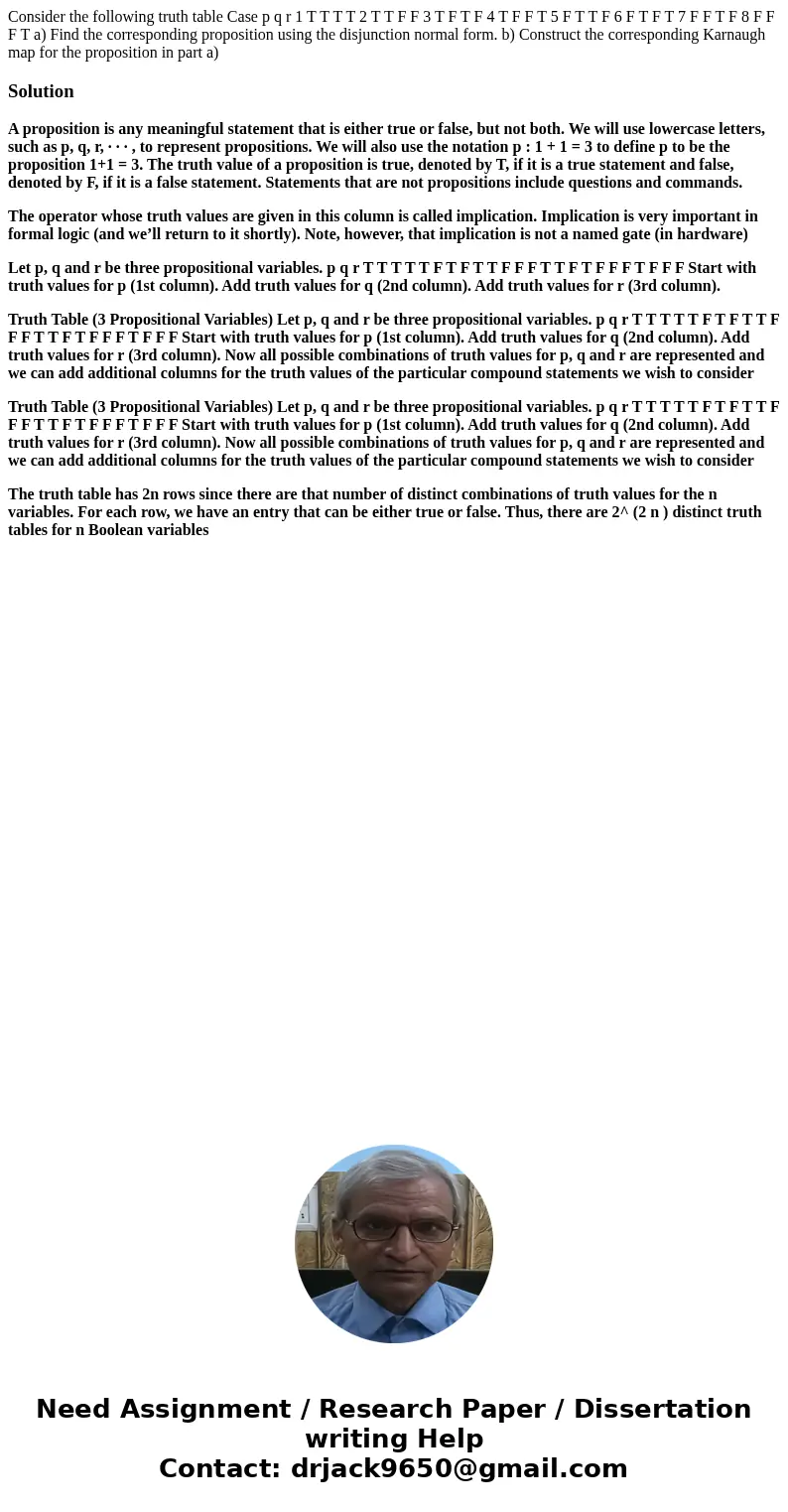Consider the following truth table Case p q r 1 T T T T 2 T
Consider the following truth table Case p q r 1 T T T T 2 T T F F 3 T F T F 4 T F F T 5 F T T F 6 F T F T 7 F F T F 8 F F F T a) Find the corresponding proposition using the disjunction normal form. b) Construct the corresponding Karnaugh map for the proposition in part a)
Solution
A proposition is any meaningful statement that is either true or false, but not both. We will use lowercase letters, such as p, q, r, · · · , to represent propositions. We will also use the notation p : 1 + 1 = 3 to define p to be the proposition 1+1 = 3. The truth value of a proposition is true, denoted by T, if it is a true statement and false, denoted by F, if it is a false statement. Statements that are not propositions include questions and commands.
The operator whose truth values are given in this column is called implication. Implication is very important in formal logic (and we’ll return to it shortly). Note, however, that implication is not a named gate (in hardware)
Let p, q and r be three propositional variables. p q r T T T T T F T F T T F F F T T F T F F F T F F F Start with truth values for p (1st column). Add truth values for q (2nd column). Add truth values for r (3rd column).
Truth Table (3 Propositional Variables) Let p, q and r be three propositional variables. p q r T T T T T F T F T T F F F T T F T F F F T F F F Start with truth values for p (1st column). Add truth values for q (2nd column). Add truth values for r (3rd column). Now all possible combinations of truth values for p, q and r are represented and we can add additional columns for the truth values of the particular compound statements we wish to consider
Truth Table (3 Propositional Variables) Let p, q and r be three propositional variables. p q r T T T T T F T F T T F F F T T F T F F F T F F F Start with truth values for p (1st column). Add truth values for q (2nd column). Add truth values for r (3rd column). Now all possible combinations of truth values for p, q and r are represented and we can add additional columns for the truth values of the particular compound statements we wish to consider
The truth table has 2n rows since there are that number of distinct combinations of truth values for the n variables. For each row, we have an entry that can be either true or false. Thus, there are 2^ (2 n ) distinct truth tables for n Boolean variables

 Homework Sourse
Homework Sourse